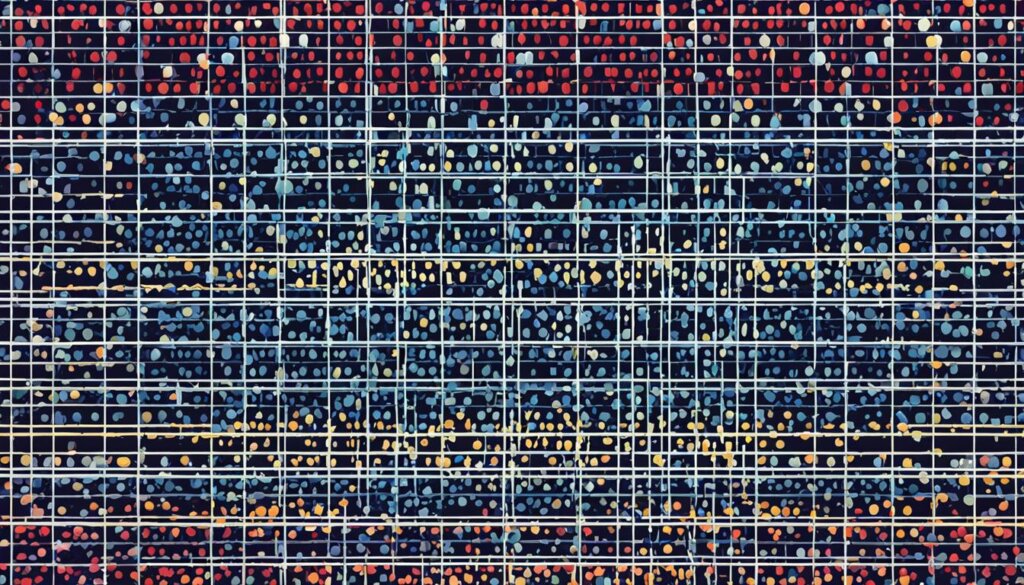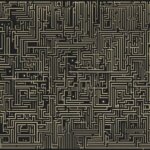Table of Contents
Data structures are crucial in the field of programming and algorithms as they provide the foundation for efficient data storage and organization on computers. By understanding data structures, programmers can optimize data access and updates, improving the overall performance of their software systems. In this article, we will explore the key concepts of data structures, their classifications, and the common types used in programming.
What is a Data Structure?
A data structure is a storage mechanism that is used to store and organize data on a computer. It plays a crucial role in programming as it allows for efficient data access, processing, retrieval, and storage. By organizing information in a structured manner, data structures enable programmers to optimize their algorithms and improve overall system performance.
Whether it’s a simple to-do list or a complex database, data structures provide a way to manage and manipulate data effectively. They serve as the building blocks for creating more advanced data management systems and algorithms.
There are various types of data structures available, each designed to serve specific purposes and solve specific problems. Basic data structures, such as arrays and linked lists, offer simple ways to store and retrieve data. On the other hand, advanced data structures, like hash tables and graphs, provide sophisticated methods to organize and analyze complex data relationships.
Having a good understanding of different data structures is essential for any programmer. It allows them to choose the most appropriate data structure for a specific task, optimize performance, and design efficient algorithms. Whether you’re working on a small project or a large-scale software system, knowledge of data structures is paramount to success.
“Data structures are the foundation upon which software systems are built. They determine how efficiently data can be stored, processed, and retrieved.”
| Data Structure | Storage Method | Main Features |
|---|---|---|
| Array | Contiguous block of memory | Random access, fixed size |
| Linked List | Nodes with references | Dynamic size, efficient insertions and deletions |
| Stack | LIFO (Last In, First Out) | Push and pop operations |
| Queue | FIFO (First In, First Out) | Enqueue and dequeue operations |
| Hash Table | Key-value pairs | Efficient lookup and insertion with hashing |
| Tree | Nodes with parent-child relationships | Efficient search and hierarchical representation |
| Heap | Binary tree with partial ordering | Efficient retrieval of the maximum or minimum value |
| Graph | Nodes connected by edges | Representation of complex relationships and networks |
Understanding the strengths and weaknesses of different data structures empowers programmers to select the most appropriate one for their specific needs. It allows them to optimize performance, improve efficiency, and deliver robust and scalable software solutions.
Classification of Data Structures
Data structures play a critical role in organizing and manipulating data in computer programming. They can be classified into various categories based on their characteristics. Let’s explore some common classifications:
- Linear Data Structures: Linear data structures are those where data elements are arranged in a linear sequence. The elements can be accessed and processed in a sequential manner. Array and linked list are examples of linear data structures.
- Static Data Structures: Static data structures have a fixed size, meaning that the amount of memory allocated to them remains constant throughout the program execution. Arrays are static data structures as their size needs to be declared in advance.
- Dynamic Data Structures: Dynamic data structures can change their size during program execution. Unlike static data structures, the memory allocation for dynamic data structures can be adjusted as needed. Linked lists are dynamic data structures as elements can be dynamically added or removed at runtime.
- Non-Linear Data Structures: Non-linear data structures do not follow a sequential arrangement of elements. Instead, they allow multiple paths or connections between elements, forming complex relationships. Trees and graphs are examples of non-linear data structures.
The classification of data structures into these categories helps programmers select the most suitable structure for their specific requirements. Each type has unique characteristics and applications. Exploring these classifications will provide a solid foundation for understanding and implementing data structures effectively.
Array Data Structure
The array data structure is a fundamental concept in programming, commonly used to store a list of items with the same data type. It provides a fixed-size structure where elements are stored sequentially, allowing for efficient access and manipulation of data.
Arrays are versatile and can be utilized in various applications, ranging from simple tasks like storing a collection of numbers or strings to more complex scenarios involving multidimensional arrays. They serve as a building block for creating more advanced data structures and play a crucial role in sorting and searching algorithms.
One important characteristic of arrays is their ability to hold multiple items of the same data type. This allows programmers to organize related data efficiently and perform operations on the entire collection without the need for individual variables.
For example:
An array can be used to store the scores of students in a class, where each element represents an individual student’s score. This makes it easy to calculate the average, find the highest or lowest score, or perform any other operation on the entire set of scores.
Arrays can be declared and initialized with a specific size, making them suitable for cases where the number of items is known in advance. However, this fixed-size nature can also impose limitations when the need for dynamically resizing the collection arises.
Despite these limitations, arrays remain a fundamental data structure in programming due to their simplicity, efficiency, and wide range of applications. Their straightforward implementation and performance make them an essential tool for developers in various domains.
To illustrate the concept of an array, consider the following example:

Comparison of Array Data Structure
| Feature | Advantages | Disadvantages |
|---|---|---|
| Efficient access by index |
|
|
| Fixed-size structure |
|
|
| Sequential storage |
|
|
Linked List Data Structure
A linked list is a linear data structure in which elements are connected to each other through links. Each element, known as a node, contains a pointer to the next node, forming a chain-like structure. Linked lists have a head and a tail, with the head pointing to the first element and the tail pointing to the last element.
Linked lists offer flexibility in terms of adding and removing elements, as they can be easily modified by reassigning pointers. This makes them suitable for scenarios where frequent insertions and deletions are required.
One advantage of linked lists is that they can dynamically grow and shrink as elements are added or removed. Unlike arrays, which have a fixed size, linked lists can accommodate any number of elements.
Linked lists are commonly used in symbol table management and for implementing switching between programs. They are also useful in scenarios where efficient data insertion and deletion operations are a priority.
Types of Linked Lists
There are several variations of linked lists, each serving different purposes:
- Singly Linked List
- Doubly Linked List
- Circular Linked List
Singly linked lists consist of nodes with a single pointer to the next node. Doubly linked lists, on the other hand, have nodes with pointers both to the next and previous nodes. Circular linked lists form a closed loop, with the last node pointing back to the first node.
Linked List Example
Here is an example of a singly linked list:
| Data | Next |
|---|---|
| 5 | → |
| 10 | → |
| 15 | → |
In this example, the head points to the first node with a data value of 5, and the tail points to the last node with a data value of 15.
Stack Data Structure
A stack is a linear data structure that follows the Last In First Out (LIFO) order. Elements can only be added or removed from the top of the stack. This structure is commonly used in recursion programming and mathematical expressions evaluation.
The stack operates on the principle of adding elements to the top and removing elements from the top. When an element is added, it “pushes” the existing elements down the stack, and when an element is removed, it “pops” the topmost element off.
Let’s take a look at the following example:
Consider a stack of plates. When new plates are added, they are placed on top of the stack. When plates are removed, the topmost plate is taken off first. This is the Last In First Out (LIFO) order.
The stack data structure is particularly useful in scenarios where elements need to be processed in the reverse order of their addition. Examples include implementing function calls in programming languages, undo/redo functionality in text editors, and evaluating mathematical expressions.
Here’s an example of how a stack can be implemented in Python:
<pre>
class Stack:
def __init__(self):
self.stack = []
def push(self, element):
self.stack.append(element)
def pop(self):
if not self.is_empty():
self.stack.pop()
return True
return False
def is_empty(self):
return len(self.stack) == 0
def peek(self):
if not self.is_empty():
return self.stack[-1]
return None
</pre>With this implementation, the push() method adds an element to the top of the stack, the pop() method removes the topmost element, the is_empty() method checks if the stack is empty, and the peek() method retrieves the topmost element without removing it.
Using a stack can simplify solving certain problems, improve efficiency, and reduce memory usage. However, it’s important to note that the usage of a stack also comes with limitations, such as restricted access to elements other than the topmost one.
| Stack Operations | Complexity | Description |
|---|---|---|
| push | O(1) | Adds an element to the top of the stack. |
| pop | O(1) | Removes the topmost element from the stack. |
| peek | O(1) | Returns the topmost element without removing it. |
| is_empty | O(1) | Checks if the stack is empty. |
The complexity of stack operations is generally constant, making stacks efficient for various applications.
Queue Data Structure
Queues are an essential data structure that follows the FIFO (First In First Out) order. They are similar to stacks but with a different order of removal. In a queue, elements are added to the end of the structure and removed from the beginning.
Queues are commonly used in various applications, including multithreading and priority queuing systems. They provide a reliable way to manage tasks in the order they are received, ensuring that the first task added is the first to be processed.
The queue data structure supports two main operations:
- Enqueue: This operation adds an element to the end of the queue.
- Dequeue: This operation removes the first element from the queue.
Enqueueing an element takes constant time, while dequeueing takes linear time, as all the remaining elements need to be shifted to fill the gap.
Here’s an example of how a queue works:
Queue: [A, B, C]
Enqueue(‘D’): [A, B, C, D]
Enqueue(‘E’): [A, B, C, D, E]
Dequeue: [B, C, D, E]
Queues can be implemented using arrays or linked lists. Arrays provide constant-time access to elements, while linked lists are more efficient for enqueue and dequeue operations when the size of the structure is not known in advance.
Understanding queues and their properties is crucial in developing efficient algorithms and managing processes in various systems.
Comparison of Stacks and Queues
| Property | Stack | Queue |
|---|---|---|
| Order of Removal | LIFO (Last In First Out) | FIFO (First In First Out) |
| Operations | Push, Pop | Enqueue, Dequeue |
| Implementation | Array, Linked List | Array, Linked List |
| Time Complexity | O(1) for Push and Pop | O(1) for Enqueue, O(n) for Dequeue |
Other Common Data Structures
In addition to the basic data structures mentioned earlier, there are other common data structures that play a vital role in computer science and programming. These include hash tables, trees, heaps, and graphs, each serving a unique purpose and providing efficient solutions to various problems.
Hash tables, also known as hash maps, are data structures that enable quick access to data by using keys. They use a hash function to convert the key into an index and store the data in an array-like structure. Hash tables are widely used in applications that require fast retrieval and storage of data, such as database indexing and caching.
Trees are hierarchical data structures with a branching structure that allows for efficient search and modification operations. They are widely used in data organization, sorting, and searching algorithms. Binary search trees, AVL trees, and B-trees are some examples of trees that find applications in various fields, including file systems, database management systems, and network routing algorithms.
Heaps are binary trees that satisfy the heap property, which ensures that the largest or smallest element is always at the root. They are mainly used for efficient retrieval of the maximum or minimum value in a set of elements. Heap data structures find applications in priority queues, sorting algorithms like heapsort, and graph algorithms like Dijkstra’s shortest path algorithm.
Graphs are non-linear data structures that consist of nodes (vertices) and edges connecting these nodes. They are used to represent complex relationships and connectivity between entities. Graph data structures are employed in a wide range of applications, including social networks, routing algorithms, recommendation systems, and data mining.
FAQ
What is a data structure?
A data structure is a storage mechanism used to store and organize data on a computer. It helps in processing, retrieving, and storing data efficiently.
Why are data structures important in programming and algorithms?
Data structures are essential in programming and algorithms as they enable efficient data access and updates.
How are data structures classified?
Data structures can be classified into different categories based on their characteristics.
What is an array data structure?
An array is a common data structure used to store a list of items with the same data type.
What is a linked list data structure?
A linked list is a linear data structure where elements are connected through links.
How does a stack data structure work?
A stack is a linear data structure that follows the Last In First Out (LIFO) order.
What is a queue data structure?
A queue is a linear data structure that follows the First In First Out (FIFO) order.
What are some other common data structures?
Some other common data structures include hash tables, trees, heaps, and graphs.












